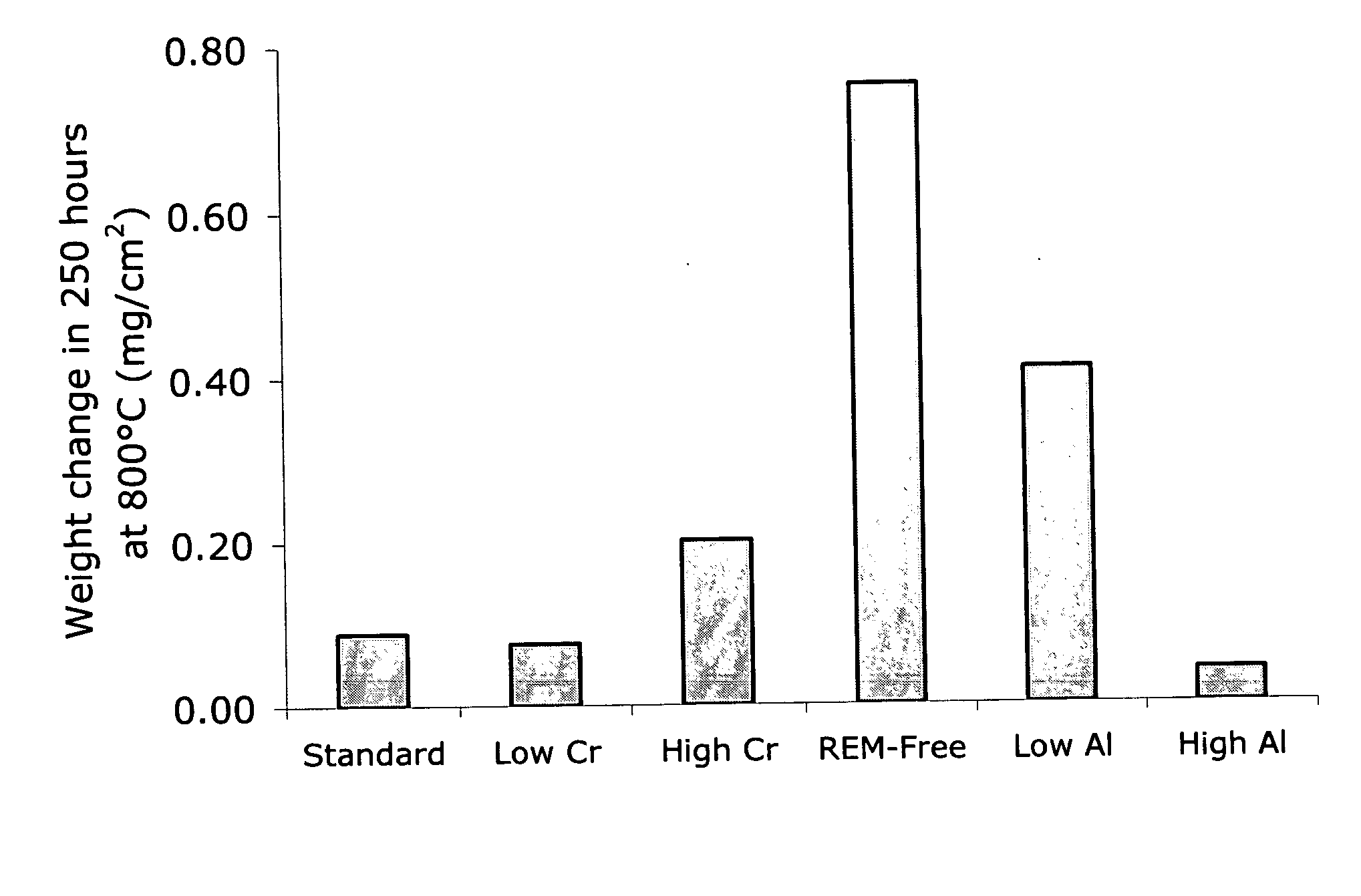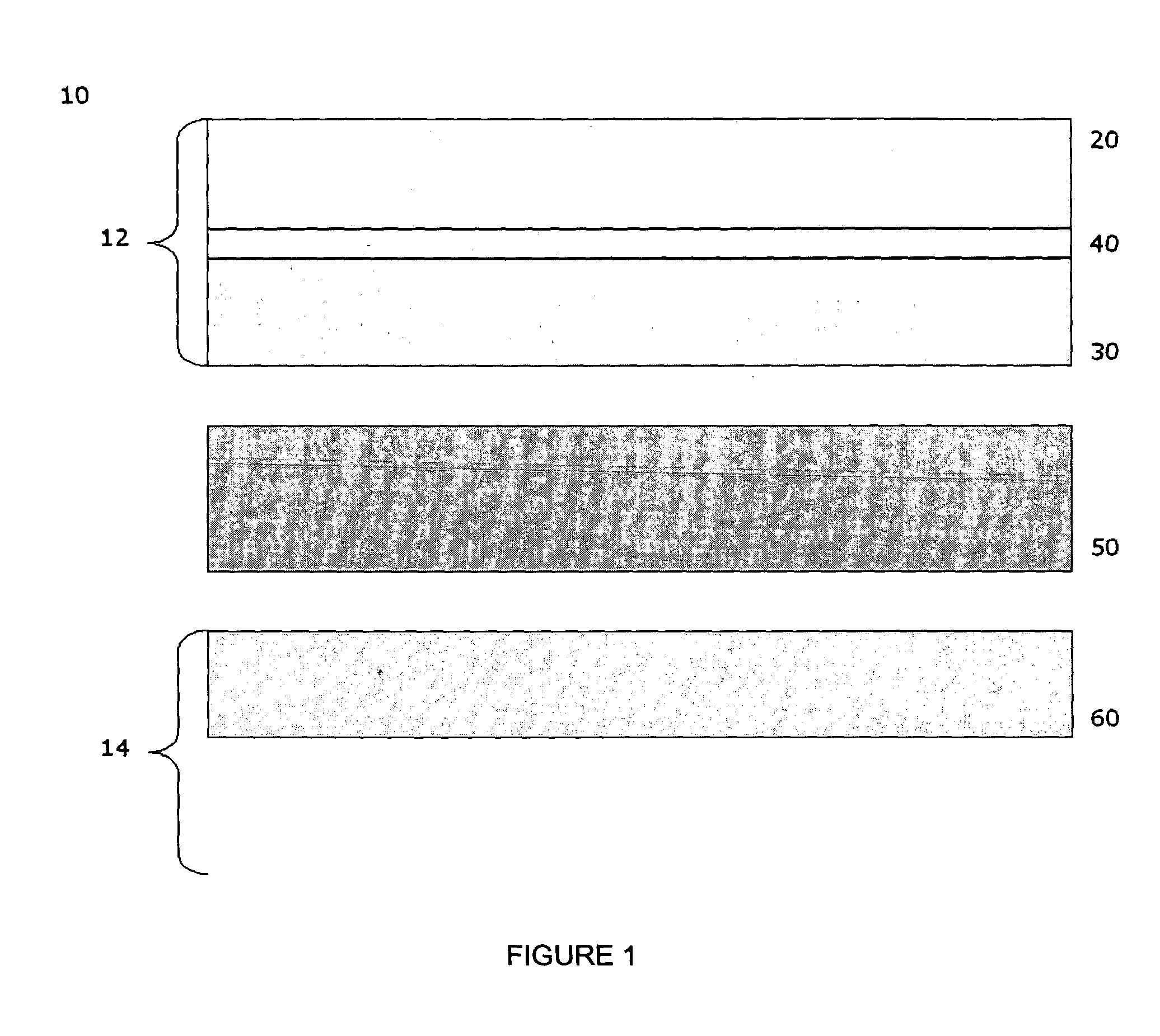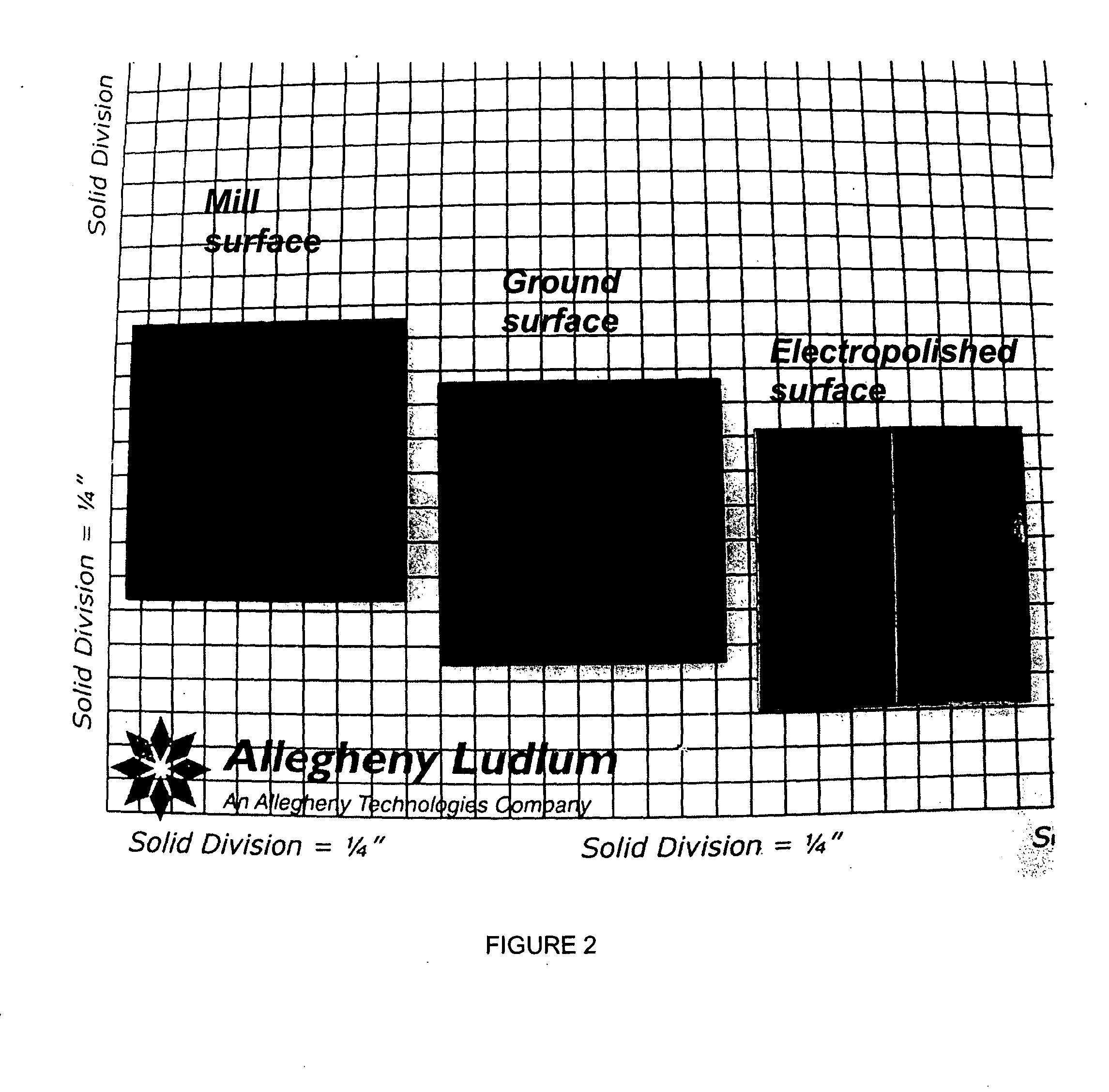Oxidation resistant ferritic stainless steels
a technology oxidation resistance, which is applied in the direction of final product manufacturing, solid-state diffusion coating, fuel cell details, etc., can solve the problems of low electrical conductivity of surface oxide layer, difficult fabrication, and brittle lacrosub>3/sub>ceramic, and achieve improved oxidation resistance, improved oxidation resistance of ferritic stainless steel, and reduced surface roughness
- Summary
- Abstract
- Description
- Claims
- Application Information
AI Technical Summary
Benefits of technology
Problems solved by technology
Method used
Image
Examples
example 1
A coil of AL 453™ alloy was provided by the conventional process of casting the alloy to a slab or ingot, hot reducing to a band, cold rolling to finished gauge with intermediate stress relieving anneals, and a final anneal in hydrogen. Several 1″×2″ test coupons were prepared from the coil and processed by three different surface treatments. Each coupon had an initial thickness of 0.075″ and a standard 2BA finish, and was degreased and had finished edges. This surface finish is generally referred to herein as a “mill” surface, and samples including that surface are referred to herein as “mill” samples. Several mill samples were further processed by grinding using 120 grit SiC paper to remove nominally 0.005″ per side. Samples prepared in this way are referred to herein as “ground” samples. Several of the ground samples were electropolished in an electropolishing solution including, by volume, 25% sulfuric acid-47% phosphoric acid-28% glycolic acid for 20 minutes (samples flipped e...
example 2
Additional testing on two coils from each of two different heats of AL 453™ alloy was conducted to assess the repeatability of electropolishing as a means to significantly enhance high temperature corrosion resistance. The starting material was processed as standard AL 453™ material, which is conventionally single-stage rolled from hot rolled band to 0.075″ and then bright annealed. Table 3 lists the quantities of prepared test samples. Table 4 describes the processes used to treat the various sample types prior to testing.
TABLE 3Pol-Re-HeatCoilMillGroundishedElectropolishedpolished89804203232C1131112103232C123111218980430323C1431112103232C13211121Total per condition44484
TABLE 4Sample DesignationSurface ProcessingMill2BA finish, as received, no further surfacepreparation.GroundAll surfaces ground with 120 grit SiC paper,removing 0.002″ (nominal) per side.PolishedAll surfaces ground with 120 grit SiC paper,removing 0.002″ (nominal) per side. All surfacesthen polished to specular f...
example 3
Glancing incidence X-ray diffraction techniques were used to characterize the nature of the oxide film formed on embodiments of the electrochemically modified ferritic stainless steels of the present disclosure. The oxidation of conventional bright annealed AL 453™ alloy occurs in a manner typical for a heat-resistant stainless steel containing more than about 16% chromium by weight. Al2O3 is thermodynamically stable and should form in direct contact with the surface of the alloy. A minimum of about 3 weight percent aluminum, however, is needed to ensure rapid enough diffusion to the metal / oxide interface to sustain the growth of a continuous layer of alumina. Therefore, in conventional bright annealed AL 453™ alloy, a chromium oxide (Cr2O3) layer forms in direct contact with the alloy surface, along with significant amounts of iron and spinel oxides. Aluminum oxide particles form in the alloy adjacent the scale / alloy interface. Such behavior is consistent with the established theo...
PUM
| Property | Measurement | Unit |
|---|---|---|
| Temperature | aaaaa | aaaaa |
| Temperature | aaaaa | aaaaa |
| Time | aaaaa | aaaaa |
Abstract
Description
Claims
Application Information
 Login to View More
Login to View More - Generate Ideas
- Intellectual Property
- Life Sciences
- Materials
- Tech Scout
- Unparalleled Data Quality
- Higher Quality Content
- 60% Fewer Hallucinations
Browse by: Latest US Patents, China's latest patents, Technical Efficacy Thesaurus, Application Domain, Technology Topic, Popular Technical Reports.
© 2025 PatSnap. All rights reserved.Legal|Privacy policy|Modern Slavery Act Transparency Statement|Sitemap|About US| Contact US: help@patsnap.com



